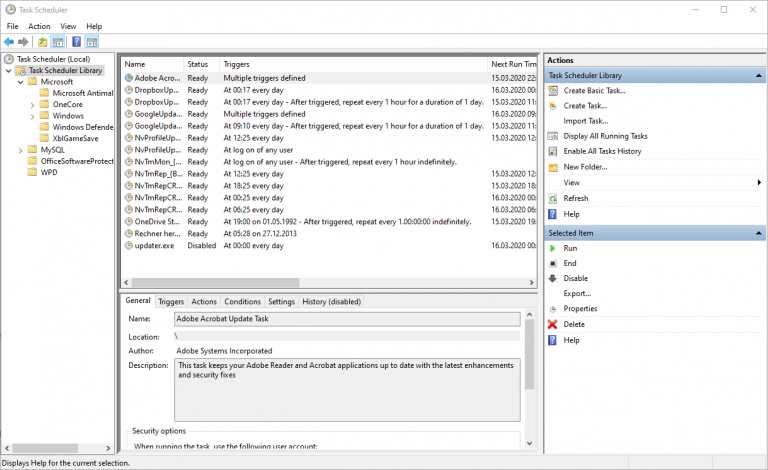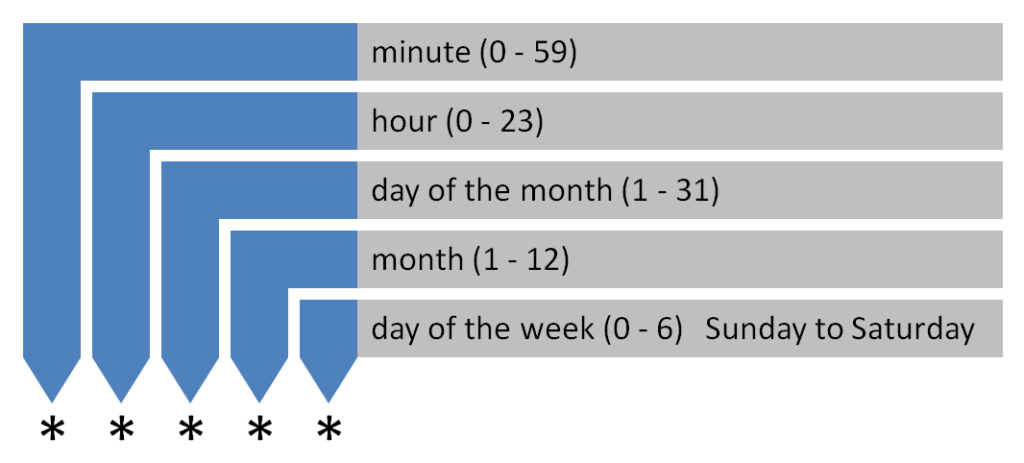


The installation of this extension only requires the following command: :~$ sudo apt-get -y install postgresql-10-cron Updating of Configuration Files This extension was defined for the version 9.5 or higher of PostgreSQL. If a second run should be started before the first one finishes, then it is queued and will be started as soon as the first run completes. Pg_cron can run several jobs in parallel, but only one instance of a program can be running at a time. PostgreSQL commands (as VACUUM, or VACUUM ANALYZE).The tasks to perform can be any of the following ones: This extension will create all the tables and functions for the pgAgent operation and hereafter is showed the data model used by this extension: Installation of pgAgent $ sudo apt-get install pgagent Step FourĬreation of the pgagent extension CREATE EXTENSION pageant Installation of pgAdmin 4 $ sudo apt install pgadmin4 pgadmin4-apache Step TwoĬreation of plpgsql procedural language if not defined CREATE TRUSTED PROCEDURAL LANGUAGE ‘plpgsql’ Hereafter are described all the necessary steps to have the pgAgent working properly: Step One
#CRON JOB SCHEDULER DOWNLOAD#
This scheduling is easily managed by PgAdmin 4, but it’s not installed by default once the pgAdmin installed, it’s necessary to download and install it on your own. The purpose is to have this agent running as a daemon on Linux systems and periodically does a connection to the database to check if there are any jobs to execute. Its configuration is stored on the postgres database in the cluster. The pgAgent is a job scheduling agent available for PostgreSQL that allows the execution of stored procedures, SQL statements, and shell scripts. The script all_db_backup.sh will be executed according each scheduling expression:Ģ0 22 * * Mon, Tue, Wed, Thu, Fri /home/backup/all_db_backup.shĠ 23 * * 1-5 /home/backup/all_db_backup.shĠ 0/5 14 * * /home/backup/all_db_backup.shĮvery five hours starting at 2:00 p.m. The comma (,) – used to define a list of valuesĭash (-) – used to define a range of values The syntax of the configuration file is the following: mm hh dd mm day ĭay: Day of the week(0-7 )Ī few operators could be used with this syntax to streamline the scheduling definition and these symbols allow to specify multiple values in a field:Īsterisk (*) – it means all possible values for a field rw- 1 nines crontab 1125 Jan 12 12:23 nines rw- 1 slonik crontab 1126 Jan 12 12:22 slonik rw- 1 dbmaster crontab 1128 Jan 12 12:18 dbmaster This program is based on a daemon (cron) that allows tasks to be automatically run in the background periodically and regularly verifies the configuration files ( called crontab files) on which are defined the script/command to be executed and its scheduling.Įach user can have his own crontab file and for the newest Ubuntu releases are located in: /var/spool/cron/crontabs (for other linux distributions the location could be different): It’s the oldest one, however, an efficient and useful way to execute scheduling tasks.
#CRON JOB SCHEDULER HOW TO#
In this blog we will explore these tools and highlight how to operate them and their main features. In order to provide scheduling functionality in PostgreSQL you will need to use an external tool like… Unlike other database management systems that have their own built-in scheduler (like Oracle, MSSQL or MySQL), PostgreSQL still doesn’t have this kind of feature.


 0 kommentar(er)
0 kommentar(er)
